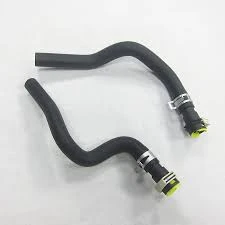shaft seal types
Understanding Shaft Seal Types
Shaft seals play a crucial role in various mechanical systems by preventing the leakage of fluids—whether they be gases or liquids—along rotating shafts. Understanding the different types of shaft seals is essential for selecting the correct seal for specific applications, ensuring reliability, and prolonging equipment lifespan. In this article, we will explore the primary types of shaft seals, their applications, and advantages.
1. Lip Seals
Lip seals, also known as radial lip seals, are one of the most common types of shaft seals. They typically consist of a flexible rubber lip that makes contact with the shaft. lip seals are favored for their ability to retain lubricants while preventing contaminant ingress. They are widely used in automotive applications, such as in engines and transmissions, as well as in industrial machinery.
Advantages - Excellent sealing performance. - Cost-effective and easy to install. - Available in various materials to suit different environments.
2. Mechanical Seals
Mechanical seals are more complex than lip seals and consist of multiple components that create a seal between rotating and stationary parts. They are primarily used in applications where high pressures and temperatures are present, such as in pumps and compressors. Mechanical seals can effectively handle both rotary and reciprocating movements.
Advantages - Superior sealing capability under high-pressure conditions. - Suitable for a variety of fluids, including corrosive liquids. - Long lifespan with reduced maintenance needs.
3. O-Rings
O-rings are simple, doughnut-shaped seals made from various elastomers. They are used in numerous applications, from household plumbing to industrial machinery. O-rings can be used as shaft seals when they are fitted into grooves to create a seal against a shaft.
shaft seal types

Advantages - Inexpensive and widely available. - Versatile; can be used in a range of applications. - Easy to replace, making maintenance straightforward.
Gland packing consists of braided or twisted fibers that are compressed to form a seal around a rotating shaft. This type of seal is commonly used in valves and pumps. Gland packing is not as common as the previously mentioned seals, but it is still an effective solution for certain applications.
Advantages - Good for high-temperature and high-pressure applications. - Can be adjusted or replaced without removing the shaft. - Effective for various fluid types, including steam and water.
5. Sealing Washers
Sealing washers are flat pieces often made of rubber or plastic, utilized to prevent leaks in bolted joints or fittings. While not traditional shaft seals, they can play a vital role in conjunction with shaft-mounted components to achieve a reliable seal.
Advantages - Simple and effective in preventing leaks at joints. - Easy installation and removal. - Can be tailored for specific dimensions and fluid types.
Conclusion
Choosing the right type of shaft seal is critical for the efficiency and reliability of mechanical systems. It is essential to consider the operating environment, the type of fluid involved, and the specific sealing requirements. By understanding the different shaft seal types—lip seals, mechanical seals, O-rings, gland packing, and sealing washers—you can make informed decisions that will enhance performance and minimize failure rates in your applications. Always consult with manufacturers or sealing experts to identify the ideal sealing solution for your needs.
-
Simplifying Oil Changes: A Comprehensive Guide to Oil Drain Plugs and Their Variants
News Aug.04,2025
-
Mastering Oil Drain Maintenance: Solutions for Stripped, Worn, and Upgraded Oil Plugs
News Aug.04,2025
-
Fixing Oil Pan Plug Issues: Leaks, Stripped Nuts, and the Right Replacement Solutions
News Aug.04,2025
-
Everything You Need to Know About Oil Drain Plugs: Sizes, Fixes, and Upgrades
News Aug.04,2025
-
Choosing the Right Oil Drain Plug: A Guide to Sizes, Materials, and Drain Innovations
News Aug.04,2025
-
A Complete Guide to Automotive Drain Plugs: Types, Problems, and Innovative Solutions
News Aug.04,2025
-
The Ultimate Guide to Car Repair Kits: Tools and Essentials Every Driver Should Own
News Aug.01,2025
Products categories















